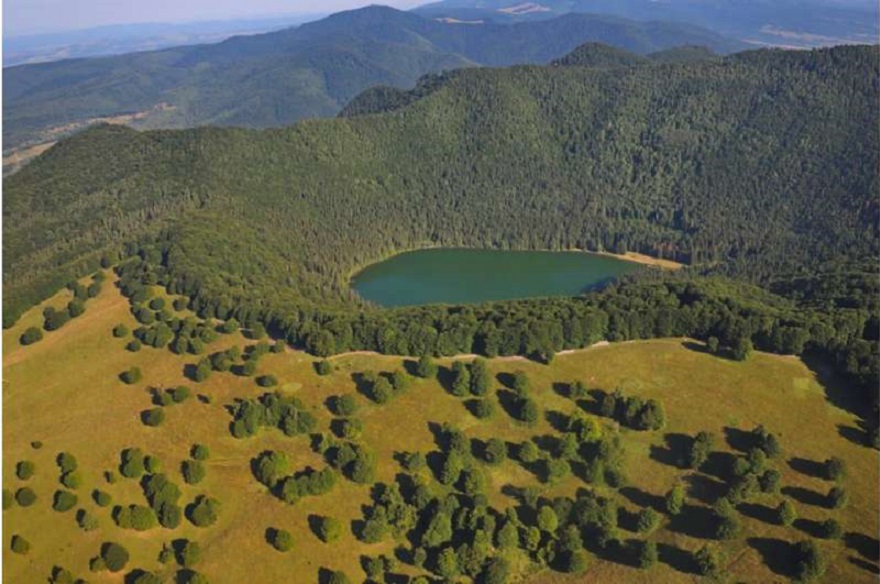The Chumetul Mare volcano is located in the Southern Carpathians in Romania. It is quite young, but the last time it erupted was several thousand years ago. However, scientists have recently suggested that a new explosion may occur completely unexpectedly.

Chumetul Mare is the youngest volcano in the Carpathians
Chumetul Mare, or Ciomadul, is the youngest volcano in the entire Carpathian-Pannonian region. It began to form just a million years ago. This fiery giant is now considered extinct because it last erupted many thousands of years ago and there is no historical evidence of its activity.
There is a volcano in the Southern Carpathians in Romania. A team of scientists from several European scientific institutions could not only study in detail the history of its eruptions but also establish the structure of the cavities under it.
Chumetul Mare was most active about 160 thousand years ago. This was followed by a series of small eruptions that lasted up to 95 thousand years ago. Then the volcano “faded out” for 30,000 years, but after that, it “woke up” again. 56,000 years ago, it produced a powerful explosion.
Afterward, Chumetul Mare took a break again and last erupted about 30,000 years ago. Scientists are interested in the question of why the volcano changed its behavior and, after a series of relatively calm and prolonged manifestations of activity, turned to explosions.
Movement of lava reveals secrets of the volcano’s past
A detailed analysis of the phase and chemical composition of the solidified lava helped scientists unravel the secrets of Chumetul Mare’s past. It could tell about the temperature, pressure and other conditions under which crystallization took place. And according to these data, scientists could recreate its movement and the reservoir system under the volcano.
The amphibole mineral especially helped them in this. Various chemical elements are incorporated into its crystal lattice under different conditions, which allows them to be accurately evaluated. In the case of Chumetul Mare, its chemical composition varies greatly.
Especially noticeable are the differences in the magma of very ancient and very new eruptions. The composition of the amphibole showed that at some point, new, hotter magma began to flow into the old reservoir under the volcano from the depths, and this could play a role when the volcano began to erupt explosively.
At the same time, in this younger magma, the amphibole demonstrates a chemical composition that is not found in other volcanoes. In addition, it is significantly more oxidized than anything previously encountered by scientists. And all this forces researchers to take a fresh look at whether the Carpathian volcano and its relatives around the world can suddenly explode after thousands of years of silence.
New evidence suggests that such a scenario is quite likely. If hot magma suddenly begins to flow into the reservoir, then events will begin to develop very quickly. Signs that a volcano that has been dormant for tens of thousands of years has woken up may appear only weeks or months before the eruption.
According to phys.org
Follow us on Twitter to get the most interesting space news in time
https://twitter.com/ust_magazine


